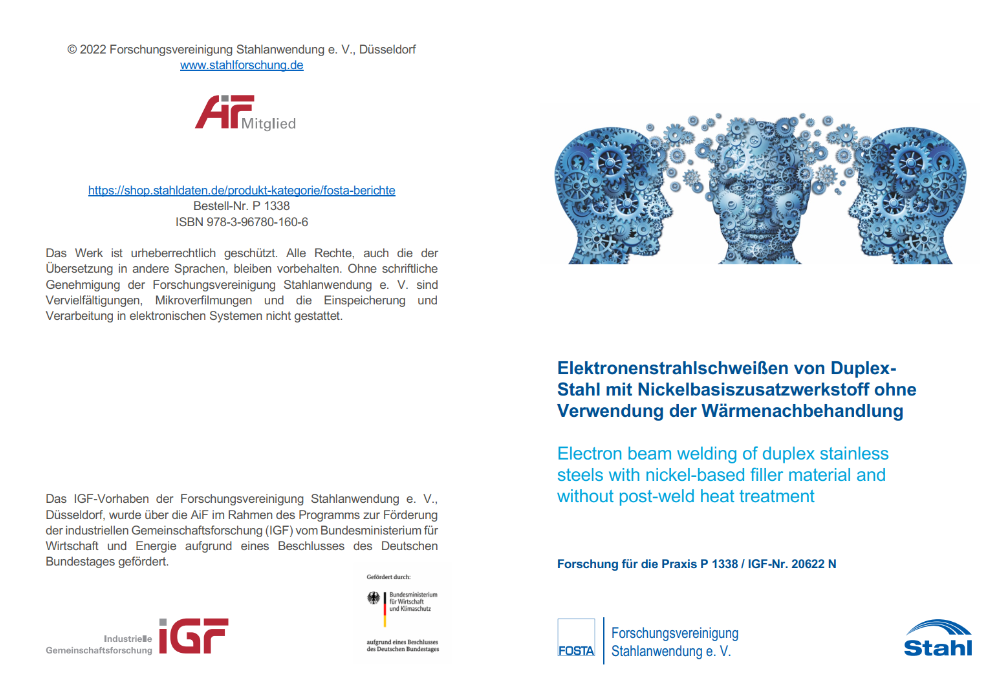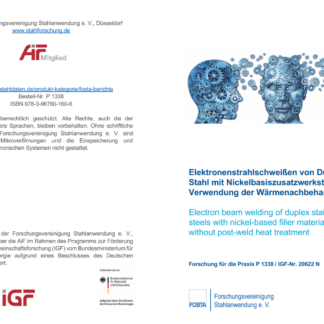Description
P 1338 – Electron beam welding of duplex stainless steels with nickel-based filler material and without post-weld heat treatment
The ferritic-austenitic duplex stainless steels are widely used in several industrial fields such as in plant engineering. Thick-walled (t >12 mm) components made of duplex stainless steels e.g. longitudinally-welded pipes are frequently welded by means of electron beam due to economic and technological reasons. However, the process characteristics of the electron beam welding lead to an unbalanced microstructure which may contain 90 % ferrite. This consequently entails a low toughness and a decreased corrosion resistance of the fusion zone. In order to restore the microstructure, the current way involves a solution treatment subsequent to the welding process. The research project aimed to develop an electron beam welding strategy, which results in a balanced microstructure in the fusion zone. In this way, the cost-intensive heat treatment may be dispensed with.
This is realized by the application of a nickel-based filler wire, which significantly influence the chemical composition and consequently the microstructure formation. To allow a good dilution between the filler wire and the base metal, beam oscillation and multi-bath technique were applied, which greatly modify the weld pool dynamics. As a result, even the weld root experienced a significant enrichment with nickel, so that the austenite distribution of the weld metal showed solely a slight inhomogeneity, even at large material thicknesses. By adjustment of the weld parameters, a parameters transfer took place not only between different material thicknesses, but also between different material batches.
To sum up, the joints, which were produced with lower manufacturing costs than in the case of current industrial practices, comply with the requirements of different standards in terms of mechanical and corrosion properties.
All research reports in german language only!
Published in:
September 2022
Authors:
T. Tóth, M.Sc., A.-Ch. Hesse, M.Sc., Univ.-Prof. Dr.-Ing. K. Dilger


